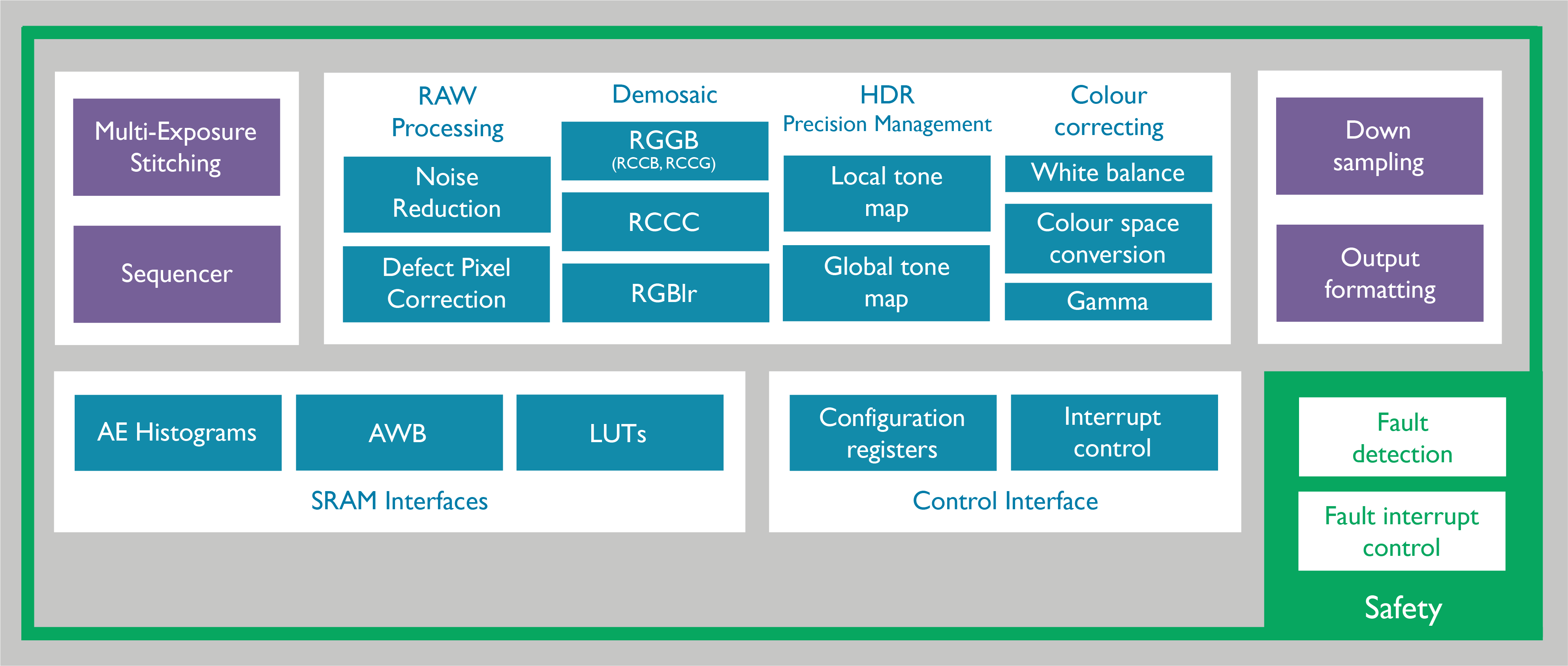By Gary Elinoff, contributing writer
While a true self-driving car that needs no input from the driver other than “take me home, Jeeves” is still a dream for the future, advanced driver assistance systems (ADAS) are a reality for the here and now. These systems depend on multiple cameras, which, even now, serve a priceless function of accident avoidance and pedestrian protection in some high-end vehicles.

Mali-C71 block diagram.
But the cameras are only the start of the story, because images from these cameras must be translated into useful information in real time. This is where a sophisticated image signal processor (ISP), as embodied by the Mali-C71 from ARM, comes in. ARM holdings (yes, ARM, the RISC CPU IP developer) has recently acquired Apical, an ISP and computer vision developer, which did much of the early work on this system-on-a-chip (SoC).
Not your smartphone’s ISP
The underbelly of a motor vehicle is a torture chamber for electronics. It’s bumpy, the temperature alternates between freezing and boiling; there are also toxic fumes and a nightmarish mix of EMI and RFI. And unlike your smartphone, where device failure is an annoyance, in the C71’s world, it can lead to tragedy.
For this reason, the device is compliant with ASIL D, as defined within ISO 26262. This mandates that the unit must include within itself extensive computational means for self-diagnosis and fault detection. The chip also devotes an entire data layer to what can be described as a consistency plane, in which image metadata is examined to make sure that what the device thinks it sees makes sense by comparing it to what it saw moments ago.
The need
It’s been estimated that in the near future, most cars will have three or more cameras. The C71 can now support four streaming cameras in addition to another 16 non-streaming units. Each ISP has a maximum capacity of 1.2 billion pixels per second. For high-end cars, which may have up to a dozen cameras, multiple C71s can work in parallel.
Better vision at night
The device offers what is described as ultra-wide dynamic range for brightness of 24 stops (224 light levels). On a dark night, the driver might see an image like the one on the left in a mirror. With ADAS, the driver sees a camera image like that on the right. It’s almost like adding night vision as a standard feature.

Mirror view vs. ADAS enhanced camera view. Image source: community.arm.com.
Now and for the future
The Mali-C71 will handle image processing for today’s human-oriented need and tomorrow’s requirements for interfacing with fast-developing computer vision engines. These needs are dissimilar, and the design will make designer’s jobs simpler by handling both within the same SOP. Clearly, this design is aimed at the future as well as the present. The company has entered into a strategic partnership with Renault, and ADAS will be a major area of ARM’s efforts in the years to come.
Advertisement
Learn more about Electronic Products Magazine





